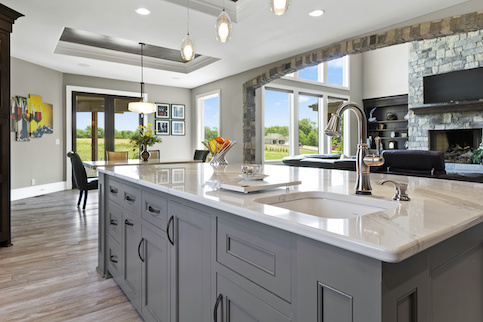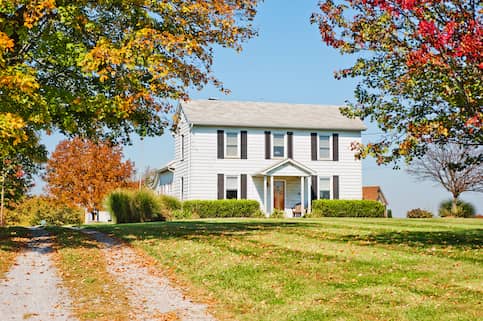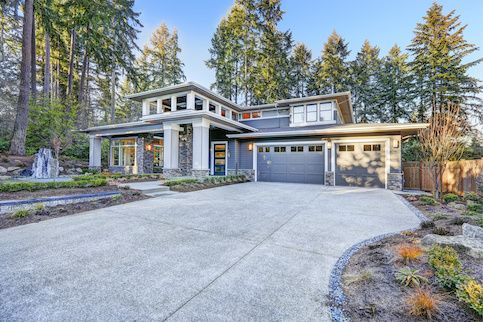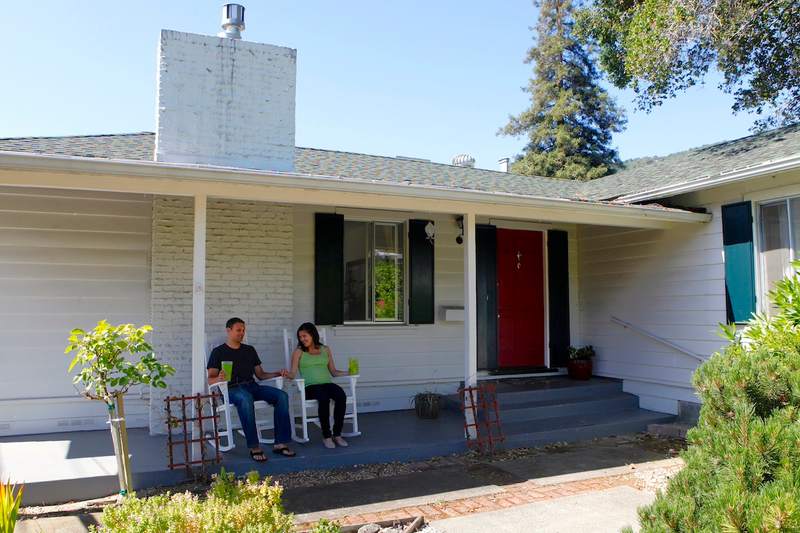If you’re ready to buy a home, you may need help financing the purchase with a mortgage. You have plenty of options when looking for a loan, and one option that might work for you is a 10/1 ARM.
Let’s take a look at everything you need to know about 10-year adjustable-rate mortgages so you can decide if they’re the best option for your financial situation.
10/1 ARM Meaning
The 10/1 ARM is an adjustable-rate mortgage, one in which your interest rate remains the same for a set period of time before adjusting to a new rate on a predetermined schedule. With the 10/1 ARM, your rate won’t change for the first 10 years of your loan. After the fixed period ends, your rate will adjust once a year for the remainder of the loan term.
If you don’t plan on living in your home for more than 10 years, a 10/1 or 10/6 ARM might be right for you.
Find out if an ARM is right for you.
See rates, requirements and beneifts.
See What You Qualify For
Buy A Home
Discover mortgage options that fit your unique financial needs.

Refinance
Refinance your mortgage to have more money for what matters.
Tap Into Equity
Use your home’s equity and unlock cash to achieve your goals.
How Does A 10-Year ARM Work?
When you’re searching for a mortgage loan, you can choose either a fixed-rate loan – a mortgage in which your interest rate never changes – or an adjustable-rate mortgage, where your interest rate will change after a set amount of time. A 10/1 ARM and 10/6 ARM belong to the adjustable-rate family of home loans, but you can think of each as a combination of a variable-rate and fixed-rate mortgage.
Adjustable-rate mortgages typically start with an interest rate lower than you’d get with a standard fixed-rate loan. After an agreed-upon number of years pass, the interest rate on an adjustable-rate mortgage rises or falls according to an index level.
30-Year Vs. 15-Year 10/1 ARM
With the 10/1 ARM, your interest rate will remain fixed for 10 years before adjusting once a year for the remaining life of the loan. If you take out a 30-year 10/1 ARM, your rate will remain fixed for 10 years and then adjust once a year for the remaining 20 years. The only difference with a 10/6 ARM is that the adjustment interval is every 6 months after 10 years.
With a 15-year 10/1 ARM, your rate again remains fixed for the first 10 years before the adjustable-rate period sets in for the final 5 years. Most ARM loans have a 30-year term.
Because the interest rate on a 10/1 ARM will be low during the first 10 years, this is a good choice if you know you don’t want to live in your new home for more than a decade.
If you plan on living in your home for longer than 10 years, be sure to understand the specific set of risks associated with ARMs. Your interest rate could rise each year after the fixed period. That means your mortgage payment will increase during this time, so make certain you can afford any possible increases.
10/1 ARM Loan Basics
A 10/1 ARM might seem complicated, but this mortgage option is relatively simple once you get the basics. Let’s break down the features of a 10/1 ARM loan.
Interest Rates
Borrowers turn to ARMs because the initial interest rate that comes with these loans is generally lower than what buyers can get from standard fixed-rate loans. Of course, the fixed period doesn’t last forever. After that initial period ends, the low rate on these loans will adjust, usually increasing.
With a 10/1 ARM, your interest rate will remain fixed for 10 years and then adjust once every year until you pay off your loan, sell your home or refinance your mortgage. The interest rate that your rate adjusts to will depend on themarket conditions and economic index to which it’s tied.
ARM interest rates may be tied to the prime rate that banks charge when issuing loans to home buyers with the strongest credit.
Be sure to ask your lender or loan officer which index they use when you apply for an ARM.
Monthly Payments
When your rate adjustment happens, your monthly mortgage payment will change, too. If your interest rate increases, your monthly payment will also rise. If it adjusts down, your payment will decrease.
Many financial calculators, like our mortgage calculator, can help you figure out your fixed-rate monthly payment compared to adjusted monthly payments. This process can give you a rough idea of how much your interest rate can affect your payment amount.
Make sure you can afford a higher monthly mortgage payment if you plan on staying in your home longer than 10 years. Your mortgage lender will also take the possibility of upward adjustments into account when you qualify.
Adjustment Interval
Most ARMs, including 10/1 ARMs and 5/1 ARMs, come with caps on how much interest rates can rise during their adjustment periods. These caps can vary, though.
Let’s say your 10/1 ARM comes with what’s known as a 5/2/5 cap. Once your ARM enters the adjustment period, your interest rate can increase by a maximum of five percentage points. That’s what the first number 5 in the 5/2/5 cap arrangement stands for.
Every year after this, your interest rate can adjust a maximum of two percentage points. That’s where the 2 in the interest rate cap arrangement comes from.
Finally, that last 5 means your interest rate during the life of your loan can never adjust higher than five percentage points from your initial rate.
10/1 ARM FAQs
As with any mortgage loan, 10/1 ARMs come with pros and cons. Below are some common questions you should consider before choosing an adjustable-rate mortgage.
What are the advantages of a 10/1 ARM?
The 10/1 ARM is often attractive to prospective borrowers for multiple reasons. Advantages include:
- A lower initial interest rate: The biggest benefit of a 10/1 ARM is the lower initial interest rate you’ll receive during the fixed period. This rate is typically less than what you’d get with a 30-year, fixed-rate loan.
- Longer fixed-rate periods: Unlike other ARMs, the 10/1 ARM comes with a longer fixed-rate period. Many other ARMs, like a 7/1 ARM and its 7/6 ARM cousin, come with a shorter fixed-rate The longer fixed period gives homeowners more time to hold onto the mortgage before the rate begins adjusting.
What are the disadvantages of a 10/1 ARM?
While ARMs can come with a lower initial interest rate and a reasonable fixed-rate period, it’s still worth considering the potential downsides to this option, which include:
- Rate uncertainty: With a fixed-rate loan, you know exactly what your interest rate will be throughout the life of your loan. ARMs – even one with a longer fixed period, such as a 10/1 ARM – are different. After the fixed period ends, your rate will adjust. This change could mean a higher mortgage payment if your rate rises. You need to be prepared for that uncertainty.
- The pressure to sell or refinance: Many homeowners take out an ARM with the goal of selling their home or refinancing to a fixed-rate mortgage before the fixed period of their ARM expires. That’s a good plan, but it might not always work. With a 10/1 or 10/6 ARM, you’ll need to be ready in case your plans to sell or refinance fall through.
Where can I find today’s 10/1 ARM rates?
Current mortgage interest rates are made available by various sources, including the Freddie Mac Primary Mortgage Market Survey that updates the rates weekly.
However, most sources don’t usually list the average interest rate for 10/1 ARMs, specifically. If you want 10/1 ARMcurrent rates, your best bet is to speak with a mortgage expert for a quote based on your credit and financial information.
The Bottom Line: A 10/1 ARM Is A Loan Option To Be Aware Of
A 10/1 ARM can make a lot of financial sense if you plan to sell your home or refinance your mortgage before the 10-year fixed period ends. In doing this, you can take advantage of the low initial interest rate that comes with an ARM and not worry about your rate rising once the fixed period ends.
Find out if an ARM is right for you.
See rates, requirements and beneifts.

Victoria Araj
Victoria Araj is a Staff Writer for Rocket Companies who has held roles in mortgage banking, public relations and more in her 15-plus years of experience. She has a bachelor’s degree in journalism with an emphasis in political science from Michigan State University, and a master’s degree in public administration from the University of Michigan.












